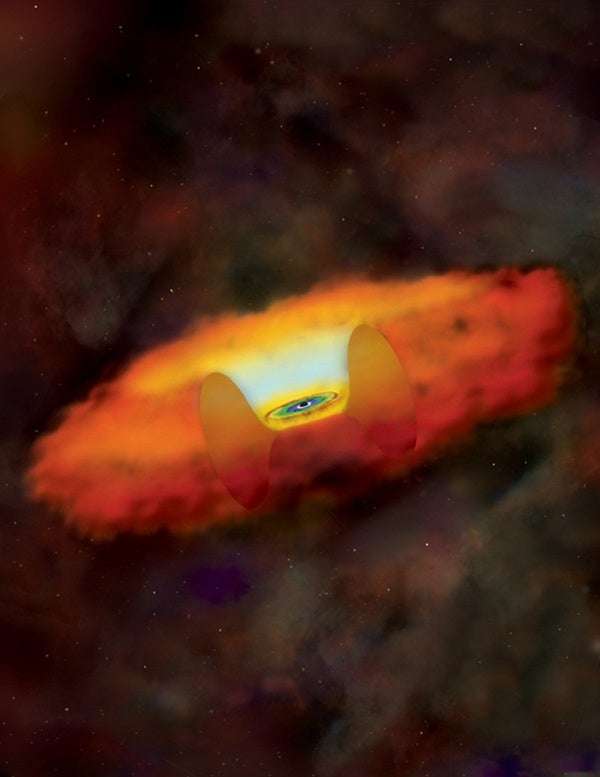Using two of the world’s largest telescopes, an international team of astronomers has found evidence of a collision between galaxies driving intense activity in a highly luminous quasar. The scientists, led by Montserrat Villar Martin of the Instituto de Astrofisica de Andalucia-CSIC in Spain, used the Very Large Telescope (VLT) in Chile and the Gran Telescopio Canarias (GTC) on La Palma in the Canary Islands to study activity from the quasar SDSS J0123+00.
Several types of galaxies, known as active galaxies, emit enormous amounts of energy from their central region or nucleus, with the most luminous objects known as quasars. Most scientists argue that quasars contain a central black hole with a mass of at least several million Suns.
The intense gravitational field created by the black hole drags material inexorably inward. Before falling in, this material settles in an accretion disk, where it becomes hot and emits large amounts of energy responsible for most of the brightness of the quasar. Around the central quasar “engine” is a torus — or thick ring — opaque to the visible light emitted by the accretion disk. From a terrestrial perspective, if the torus is face-on, then the radiation from the disk is visible, and the system is designated type 1; in type 2 quasars, the torus is edge-on, and the radiation is concealed.
“Type 2 quasars are a family of still rather unknown galaxies that so far have been investigated mostly from a statistical point of view,” said Montserrat Villar-Martin.
“The goal of our work is to study their individual characteristics in detail,” said Montserrat Villar-Martin. “In our study, we have obtained some surprising results. For example, we have observed a giant nebula of ionized gas associated with SDSS J0123+00 and signs of an interaction with a nearby galaxy. This strengthens the idea that activity in galaxies is partly driven by the exchange of material between the active galaxies, or quasars, and their neighbors.”
Although type 2 quasars are more difficult to detect, they are unique laboratories that let astronomers study the quasar environment in great detail, thanks to the dimming of the central radiation by the surrounding torus.
In the case of SDSS J0123+00, one of the most important results is the discovery of an extended, faint nebula of ionized gas around the entire galaxy. The nebula is about 6 times larger than our own Milky Way Galaxy, and according to the scientists, it is probably made of the debris of the interaction between SDSS J0123+00 and its neighbor.
Part of the giant nebula is a bridge of material that connects the two galaxies. This strengthens the hypothesis that the quasar activity is triggered by the interaction between them, producing the accumulation of gas in the galactic central regions and providing material to feed the black hole. This process can also trigger the rapid formation of new stars.
The new results are the first based on images obtained with the tunable filter of the Optical System for Imaging and low Resolution Integrated Spectroscopy (OSIRIS), the instrument installed on the GTC. The OSIRIS tunable filter allows astronomers to observe objects in narrow windows across the spectrum of visible light from red to blue, something that with older systems would need more than five thousand narrow band filters.










